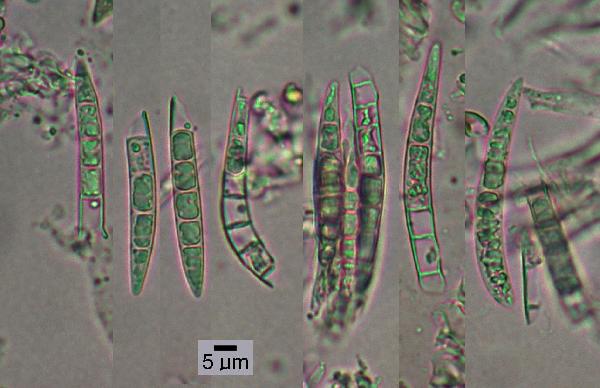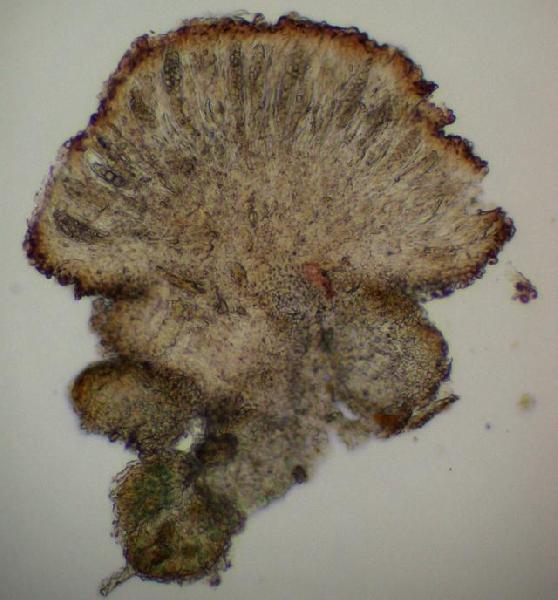Arctomia delicatula Th. Fr.
Nova Acta R. Soc. Scient. Upsal., ser. 3 3: 387, 1861 (1860)
Synonyms:
Distribution:
Description: Thallus red-brown to olive, variable, from crustose, very poorly developed and mostly granular to subsquamulose, rarely with distinct, up to 0.2 mm wide lobes (and then resembling some species of Scytinium). Upper cortex formed by a single layer of brown cells; medulla of a loose network of cells. Apothecia common, biatorine, red-brown, nearly translucent when wet, usually convex, up to 0.5 mm across, often coalescent, with a thin, finally often excluded proper margin. Proper exciple thin, of radially arranged, thin-walled, slightly pigmented hyphae; epithecium brown; hymenium and hypothecium colourless, hemiamyloid; paraphyses 1-2 µm thick, lax, branched, the apical cells brown-pigmented, up to 5(-8) µm wide. Asci 8-spored, broadly cylindrical, apically thickened, without distinct amyloid structures. Ascospores up to 8-10-septate, hyaline, fusiform (40-)55-80(-95) x (3-)4-5(-7) µm, rarely with an attenuated lower cell. Pycnidia rare, immersed, up to 50 µm across. Conidia bacilliform, 2-3 x c. 1 µm. Photobiont cyanobacterial (Nostoc, the cells in clusters). Spot tests: all negative. Chemistry: without lichen substances.Note: a mainly arctic species growing on soil and plant debris in tundra-like vegetation (in the subarctic zone also reported from bark at the base of trees), with a single record at high altitude in the Swiss Alps. To be looked for in the Italian Alps.
Growth form: Crustose
Substrata: soil, terricolous mosses, and plant debris
Photobiont: cyanobacteria, filamentous (e.g. Nostoc, Scytonema)
Reproductive strategy: mainly sexual
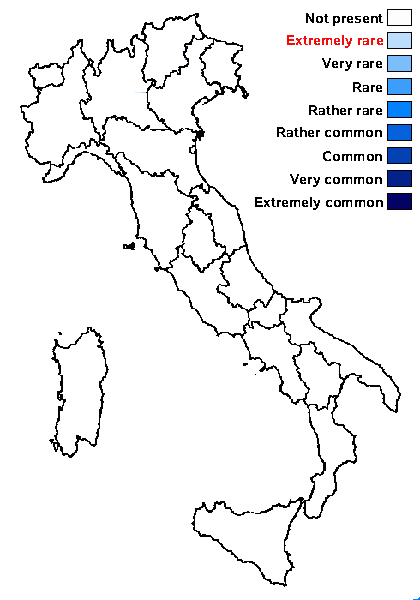
Predictive model
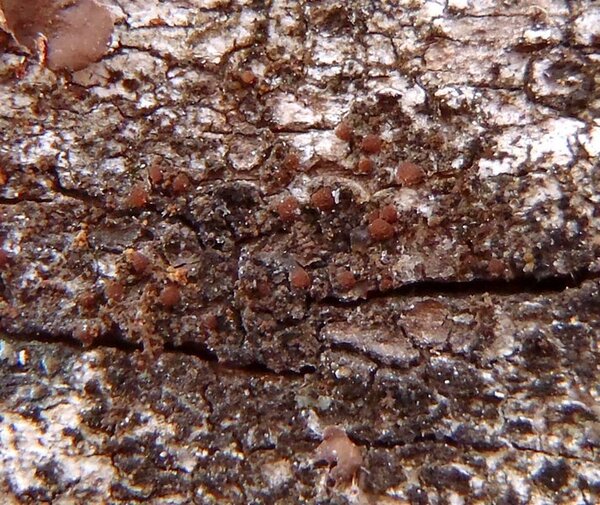

Curtis Randall Björk – CC BY-SA 4.0
British Columbia, Fraser Plateau, Robson Valley On bark of dead Populus trunk in antique boreal rainforest 2006-09-02
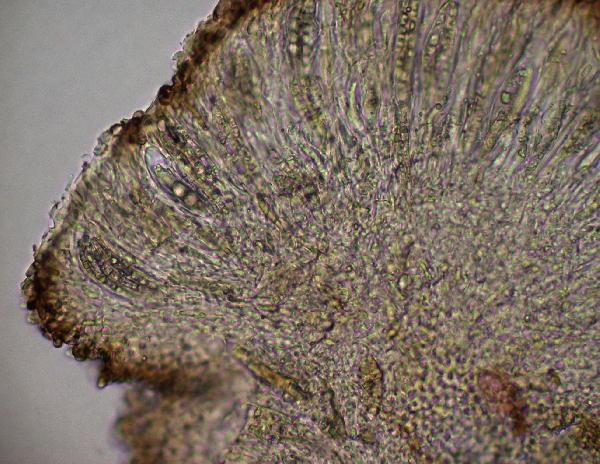
Bruce McCune – CC BY-NC – Source: https://lichenportal.org/portal/collections/individual/index.php?occid=5360568
United States, Oregon, Josephine, Mt Ruchi top, Lake Mountain Trail; Siskiyou Mountains, 1631 m
Oregon State University Herbarium (OSC) OSC-M-052581
Growth form: Crustose
Substrata: soil, terricolous mosses, and plant debris
Photobiont: cyanobacteria, filamentous (e.g. Nostoc, Scytonema)
Reproductive strategy: mainly sexual

Predictive model


Curtis Randall Björk – CC BY-SA 4.0
British Columbia, Fraser Plateau, Robson Valley On bark of dead Populus trunk in antique boreal rainforest 2006-09-02

